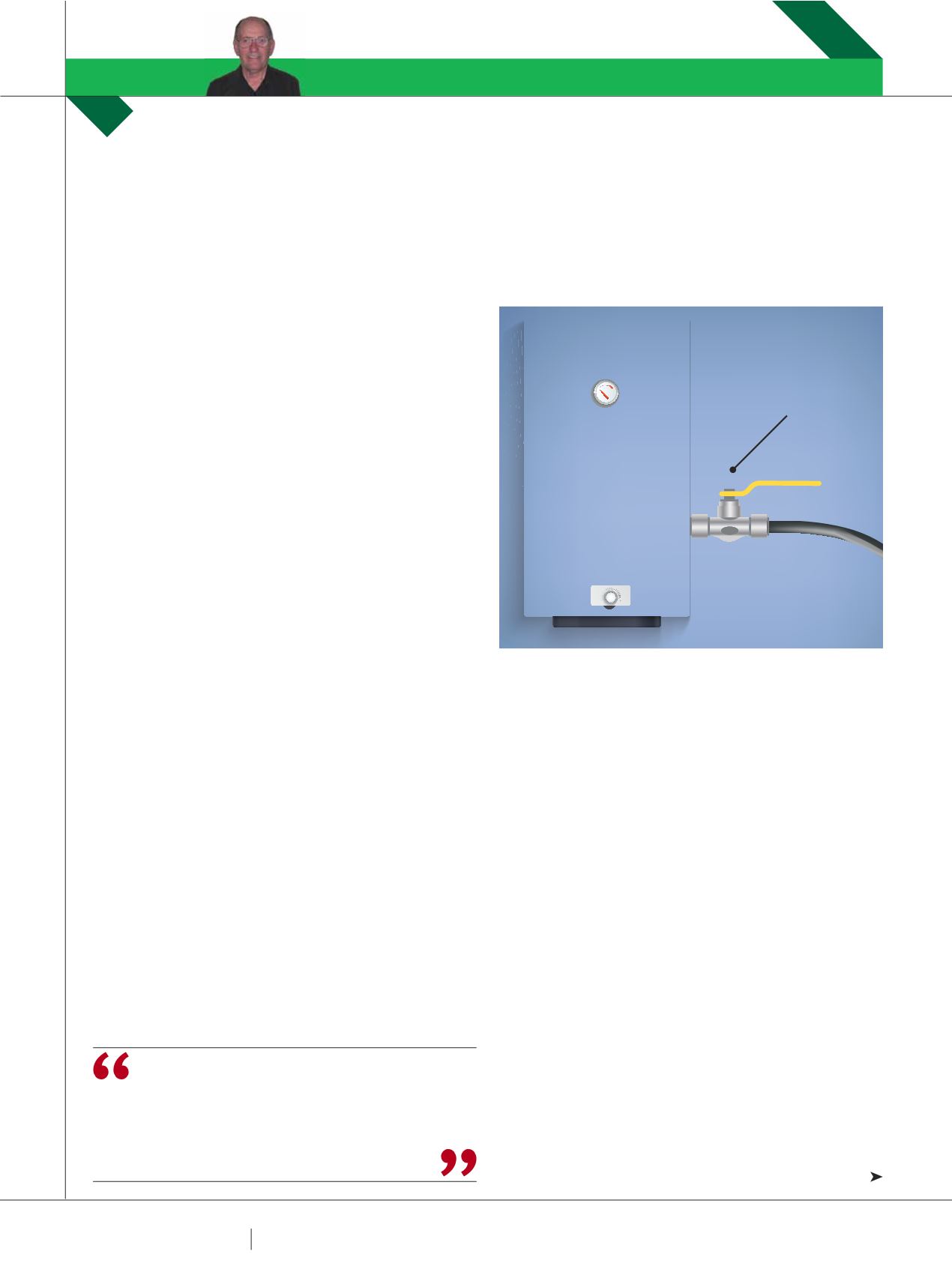

8 2
PLUMBING CONNECTION
SPRING 2015
A BIT EACHWAY
T
he printed material that comes with some appliances
is often self-contradictory.
There are statements that the installation must
conform to local gas-fitting regulations, and the installer
may be urged to refer to AS/NZS 5601. However, many of
the instructions in the manual relate to requirements in the
country of manufacture.
I won’t list the manufacturers or models, as some people
may think I’m criticising the appliance (this is not the case).
One set of instructions requires minimum inlet pressure
of 1.37kPa for natural gas and 2.74kPa for LPG. It also
specifies manifold (burner) pressure of 0.87kPa and 2.74kPa
respectively.
For natural gas installations a supply pressure of only
1.13kPa is available, so what effect does this have on the
operation of the gas valve and the appliance?
You would like to think it would have no effect, yet on
another page in the manual it states that the standard input
pressure is to be 1.74kPa – which makes things confusing.
Judging by photographs and drawings in the installation
manual, the shut-off valve as supplied is actually fixed to
the appliance. A flexible hose is connected to the shut-off
valve, which contradicts Clause 6.6.4 of AS/NZS 5601,
which states that the means of disconnection shall be
downstream of the means of isolation.
What does this mean for installers: do they have to change
the location of the shut-off valve to conform to ‘local gas-
fitting regulations’ such as AS/NZS 5601? Then there are
flue termination requirements stipulating compliance with
AS/NZS 5601.1
The installation manual sets out flue clearances in
a similar way to page 118 of AS/NZS 5601. However, it
seems to have been converted to metric from the imperial
measurements in the original document.
In some cases the measurement differences are minor.
In others, such as Item G, a clearance of 500mm is required
horizontally from any building structure or obstruction
facing a terminal, yet the manual requires a minimum
clearance of 1219mm from any adjacent building.
Every few lines between the lists of clearances in the
manual it states: “Note clearance in accordance with local
installation codes and the requirements of the gas supplier.”
Where the gas supplier comes into it is anybody’s guess.
CONFUSION PLUS
If installers find the above confusing, then certain
requirements in AS/NZS 5601–2013 part 1 will not make
things any easier.
In Clause 2.6.2 General installation requirements, the
first sentence states: “Gas appliances and equipment shall
be installed in accordance with the manufacturers’ written
instructions.”
In Clause 6.2.2 Manufacturers’ installation instruction,
the first sentence states: “Appliances shall be installed in
accordance with the requirements of this Standard and the
manufacturers’ instructions.”
In Clause 1.8.102, under definitions of terms, the word
‘shall’ indicates a mandatory aspect.
Obviously a discrepancy between the above quoted two
clauses can be sorted out, but if it is not addressed in unison
with Clause 6.2.2 then nothing will be resolved.
GAS APPLIANCE INSTALLERS NEED CLEAR AND CONCISE INSTRUCTIONS BUT FOR ONE REASON OR ANOTHER,
SOME MANUFACTURERS MAKE THINGS DIFFICULT.
ROGER LAMBIE
REPORTS.
Means of disconnection to be downstream of means of
isolation.
IT IS NOT THE RESPONSIBILITY
OF INSTALLERS TO DETERMINE
WHAT IS RIGHT OR WRONG IN THE
INSTALLATION INSTRUCTIONS.
GAS MATTERS
ROGER LAMBIE
DISCONNECTION
UPSTREAM OF
ISOLATION POINT
GAS APPLIANCE
















